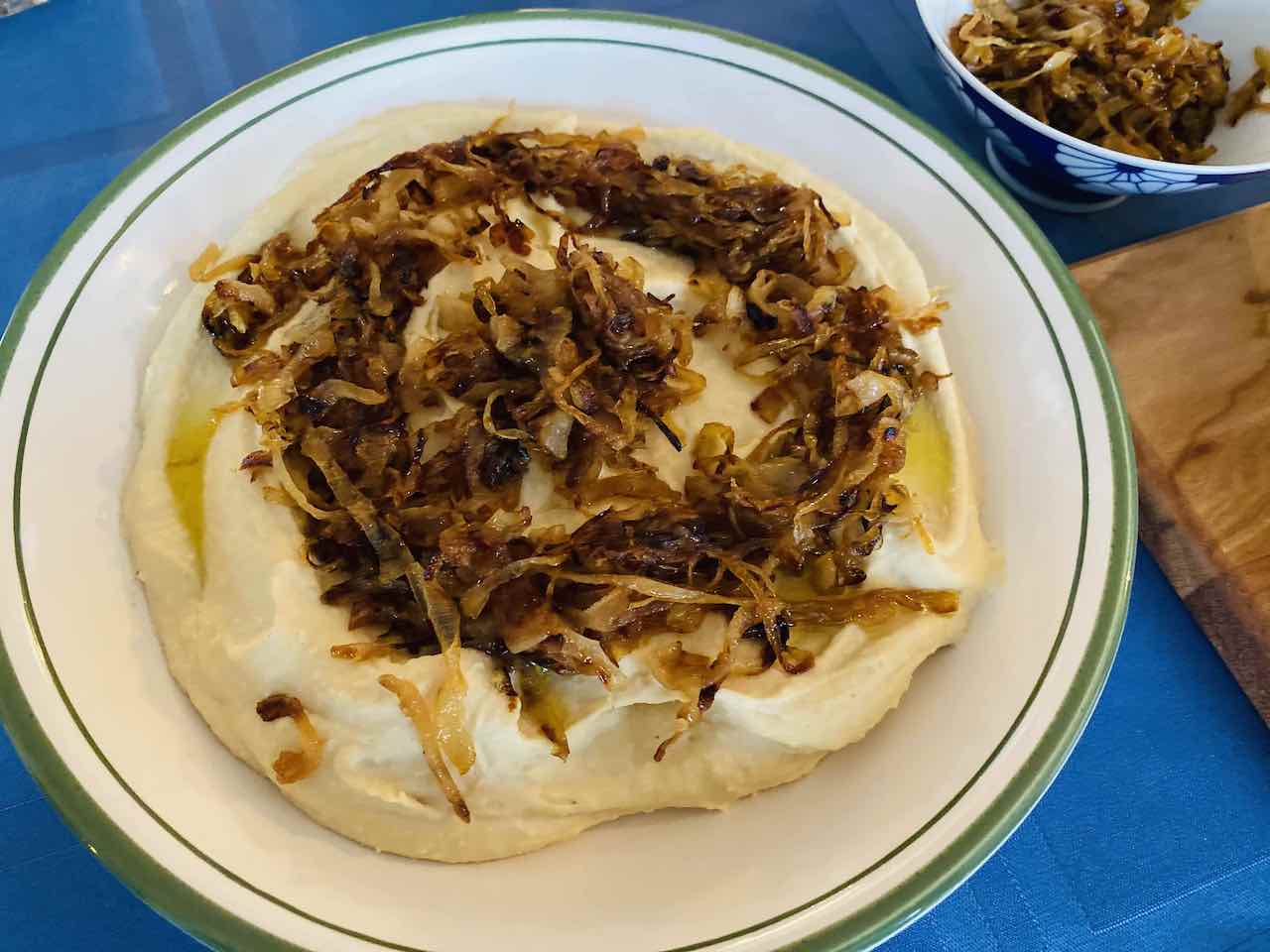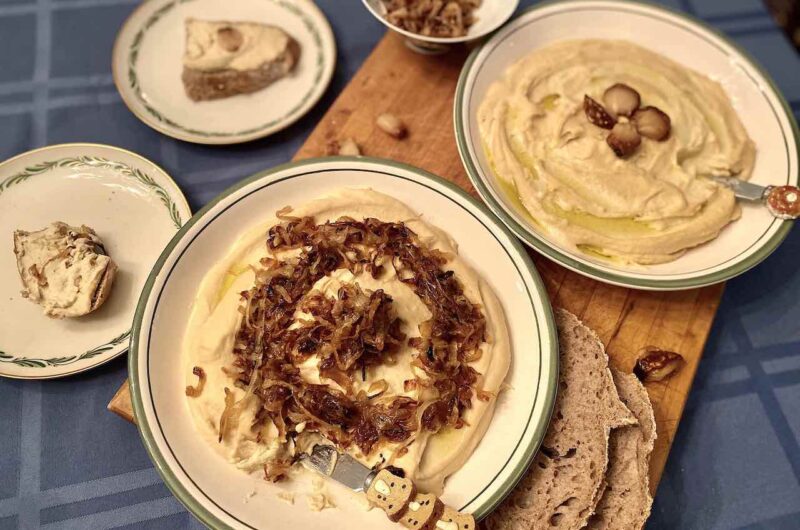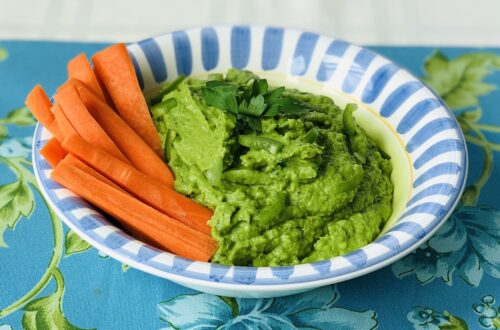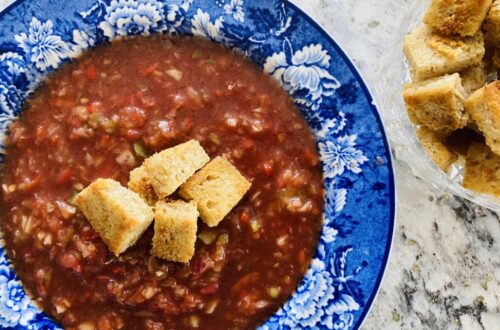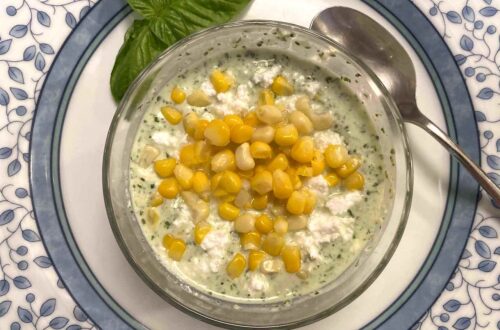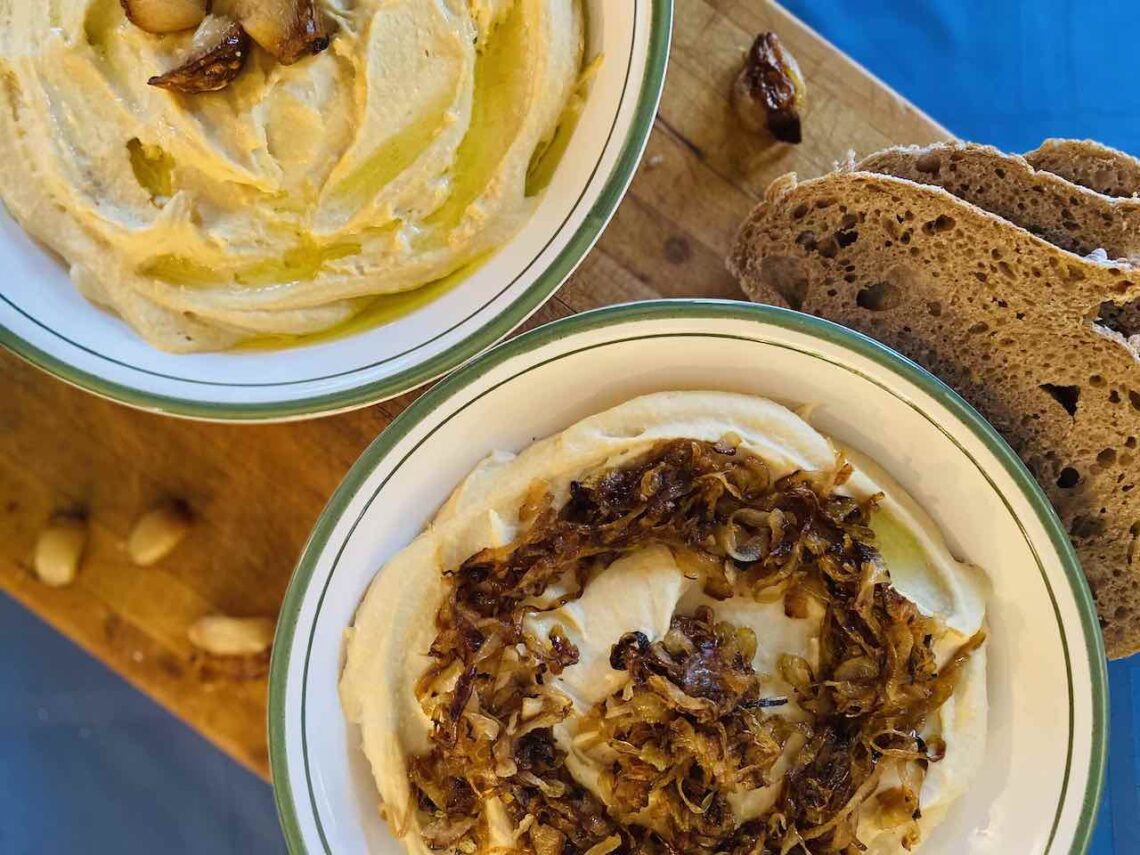
Hummus Two Ways
As 2020 comes to an end, I want to close out the year on an upbeat note. It’s been a difficult time for so many, and we are all eager to start the new year – one in which vaccines will be rolled out, the terrible orange man will no longer be in charge of the United States, and we can all (eventually) gather with friends and family once again. While this New Year’s will be unlike any other, I think we all owe it to ourselves to celebrate the hell out of the end of 2020.
This recipe – for hummus topped with caramelized onions and roasted garlic – is part of my New Year’s plan, which includes other fun finger foods: stuffed mushrooms, bacon-wrapped dates, and cheese and prosciutto. This recipe is for the famous hummus from the cookbook Jerusalem, by Yotam Ottolenghi and Sami Tamimi, the Israeli-Palestinian duo that have made ingredients like tahini mainstream for American and European cooks. This hummus is superb, less like the packaged hummus from a grocery store and more like the hummus from my favorite hummus restaurant in Berlin (Azzam, I hope you are still around when I get back to Germany) or the hummus you find in Palestine. Plus, for those of you who already make fresh hummus and follow recipes that involve carefully peeling the skin off of each chickpea, this recipe eliminates that hassle.
I didn’t want to end the year with a post about forced labor, child labor, or some other exploitative practice or environmental harm. This post therefore focuses on an ingredient that is both good for the environment and nutritious: chickpeas, also known as garbanzo beans. Chickpeas are pulses, the dry edible seed of a plant that grows in a pod. They have a lot of similarities to lentils, which I wrote about just a few weeks ago.
Like lentils, chickpeas are very nutritious: they are high in protein, high in fiber, and low in fat. And like lentils (and other pulses), chickpeas fix nitrogen from the atmosphere in the ground, which adds nutrients to the soil and makes it richer. By fixing nitrogen in the soil, chickpeas can help to lessen climate change and allow for healthy crop rotation. Chickpeas are also “fairly drought-tolerant and disease resistant,” making them good crops to grow in areas that don’t get a lot of rain.
Chickpeas are an important staple for many people, with 20 percent of the world’s population relying on them as a key protein source. In the US and Europe, hummus sales have increased significantly in recent years. Between 1996 and 2016, hummus sales in the US grew from $5 million to $725 million and by 2018 had increased to a whopping $800 million. Consumption has also increased in Britain and Europe, although not at the same startling rate. Yet India remains far and away the largest producer of chickpeas, producing 70 percent of the global total. The US grows chickpeas (in much smaller quantities), mainly in the West: Montana, Washington, Idaho, and North Dakota.
Chickpeas appear to be nutritious and environmentally friendly. Perhaps this should not be surprising. They are some of the oldest cultivated vegetables, thought to have been grown 7,500 years ago in Mesopotamia. Moreover, the farmed chickpeas we eat today are believed to be similar to their wild predecessors. There is usually a reason why a food is so enduring.
Hope you enjoy the hummus and have a happy New Year!
Hummus Two Ways
Course: Appetizer, Breakfast, Brunch, Recipe, Side, Snack6
servings1
hourAdapted from Basic Hummus in Yotam Ottolenghi and Sami Tamimi’s cookbook, Jerusalem. You can certainly make the hummus and eat it plain. If you’d like to jazz it up a bit, consider adding either (or both!) the caramelized onions and the roasted garlic.
Ingredients
- Hummus
3 ½ cups chickpeas, cooked (1 ¼ cups dried chickpeas or 3 ½ cups canned chickpeas)
1 teaspoon baking soda
6 ½ cups water
1 cup tahini, divided
4 tablespoons of lemon juice, divided
4 cloves of garlic, divided
6 tablespoons ice water, divided
1 ½ teaspoons sea salt, divided
- Roasted Garlic
1 bulb of garlic
1 tablespoon extra virgin olive oil
- Caramelized Onions
2 tablespoons unsalted butter
3 cups of white or yellow onions, thinly sliced
Directions
- Hummus
- If using dried chickpeas, soak the chickpeas in water overnight in a large bowl or pot. The next day, drain the chickpeas. (If you are using canned chickpeas, skip to next step 4.)
- Pour the chickpeas into a large pot, add the baking soda, and cook for about three minutes, stirring occasionally. (The baking soda should no longer be visible and the chickpeas should not stick to the pan.)
- Add the water and bring to a boil. Simmer for 20-40 minutes, until the chickpeas are soft and beginning to fall apart. As the chickpeas cook, skim off foam and any chickpea skins that float to the top. Once the chickpeas are cooked, drain them. (If you are using canned chickpeas, drain and rinse them, and then skip straight to the next step.)
- Make the hummus in two batches. First, add 1 ¾ cups of cooked (or canned) chickpeas to a food processor. Then add 2 cloves of garlic, 2 tablespoons of lemon juice, and ¾ teaspoons salt to the food processor and mix for about 20 seconds, until it forms a thick paste.
- Next, add 3 tablespoons of ice water and mix for another 5 minutes. Adjust the salt and lemon to taste. Pour the hummus into a serving bowl and top with roasted garlic and caramelized onions (see below). Repeat to make a second batch of hummus.
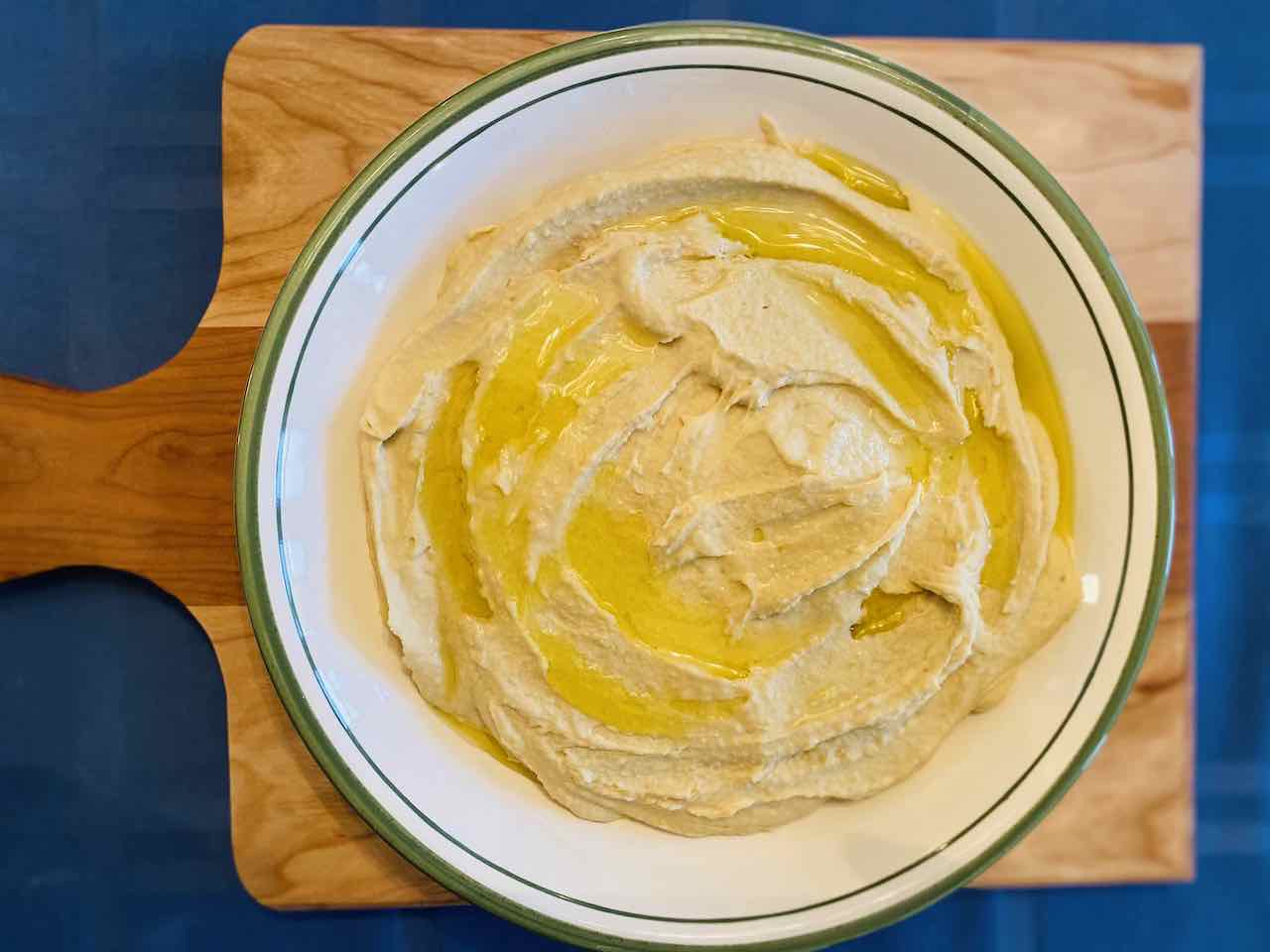
- Roasted Garlic
- While the chickpeas are cooking, make the toppings: roasted garlic and caramelized onions. To roast the garlic, preheat the oven to 400˚ F (200˚ C). Pull off all the outside skin of the garlic and chop off the top of a garlic bulb so that each clove is open at the top. Coat the garlic in 1 tablespoon of oil, making sure that the garlic head is evenly coated. Place the garlic head in aluminum foil (or a garlic cooker if you happen to have one), wrap well, and cook for 60-90 minutes. The longer you bake it, the deeper the taste. When the garlic is done, let it cool for at least 5 minutes. Then carefully remove the cooked garlic cloves from the peels, add it to half of the hummus, and serve.
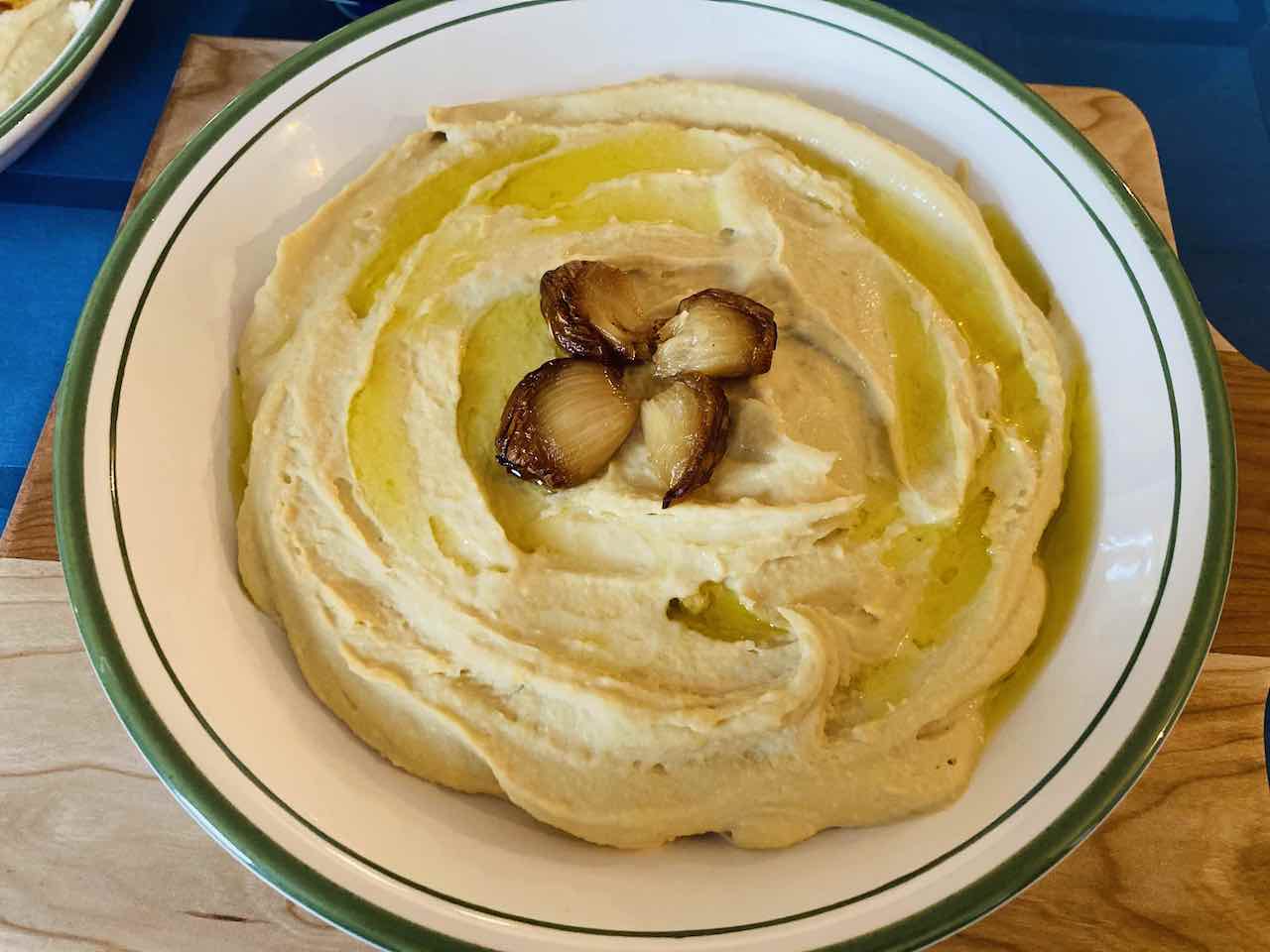
- Caramelized Onions
- While the chickpeas are cooking and the garlic is in the oven, caramelize the onions. Heat 2 tablespoons of butter in a large pan over medium heat. Add half the onions and cook for about 2 minutes, until they begin to turn translucent. Then add the rest of the onions and cook over medium-low heat for 40-60 minutes, until they have reached the desired consistency. The longer you cook them, the richer their flavor will be. When done, add to half of the hummus and serve.
